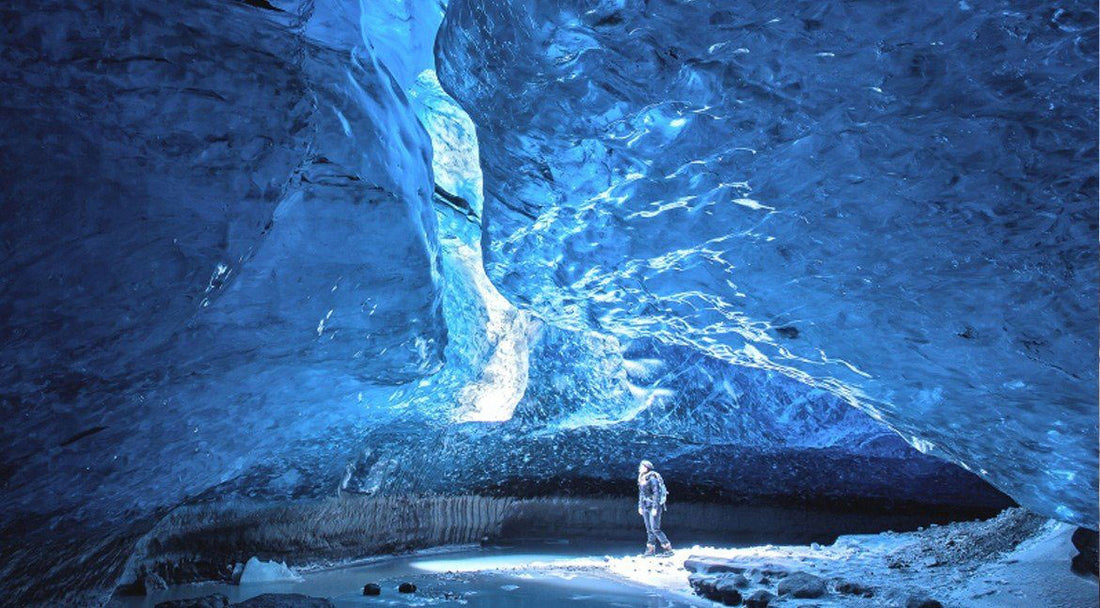If you’re a veteran caver, then you know how exciting it is to enter a new cavern where few other humans, if any, have ever tread. The thrill of discovery and sense of adventure really gets the blood pumping. But if you’ve never entered an ice cave, beware: you’re adding an extra layer of risks to those you already take for granted when exploring a normal cave. Entering an ice cave requires careful assessment before hand, and a keen awareness of the potential danger involved.
By definition, an ice cave is any natural cave that either contains lots of ice or is formed in ice and stays frozen year-round. The only thing they really have in common is that you should wear your long johns and Triple F.A.T. Goose outerwear when you visit, because the key word here is ICE.
So: when is it safe to enter a cave formed of pure ice, like in a glacier? Never, according to a cautionary blog posted by the Washington Trails Association in 2010. No matter how cold it is or how hard and compact the snow is nearby, an avalanche or icefall might trap you inside—or worse. Sadly, on July 7, 2015, a woman died in an icefall in one of the famous Big Four Ice Caves in Washington State.
That said, some ice caves are actually safe to enter, as long as they’re the rocky kind that only contain ice and have been declared safe, or provide guided tours. Scarisoara Cave in Romania is an excellent example.
Ice caves are beautiful, with their delicate ice formations and lovely natural lighting. It’s no wonder they attract thousands of visitors every year. But entering one is always risky to some extent. Dripping water, vibrations, and warm temperatures can cause ice to become unstable. Similarly, noise and vibrations can cause avalanches that can trap you inside and further destabilize the ice, making things worse.
We suggest you stick to mostly rocky ice caves like Scarisoara. If you insist on entering a pure ice cave, do NOT enter in the spring or summer. Even if you enter during the deep winter, hire a guide and wear protective gear, including a crash helmet—and it wouldn’t hurt to carry an ice ax and crampons, just in case.

